Race Report: Across the Years 24 Hour Footrace 2021
On December 28th and 29th, 2021 I competed in the Across the Years 24 Hour footrace. I completed 100.5 miles, putting me in the top 10% of finishers. Here is the race report.
Goals
Results
- New PR for 50 Miles – (Current PR = 11 hours 24 minutes) – ACCOMPLISHED (new PR 10 hours 29 minutes)
- New personal record for distance in 24 hours – (Current Record = 89 miles) – ACCOMPLISHED
- Complete >100 miles – ACCOMPLISHED
- Complete >120 miles – Failed
- Complete >200k (124.25 miles) – Failed
- Complete >130 miles – Failed
Tactics
- Break race into three segments of 8 hours – ACCOMPLISHED
- First segment easy – kept <120 bpm – Partially Accomplished – Averaged 119 but had some spikes at 130 and 140
- Second segment working – ~120 but can dig some – Failed only averaged 116
- Final segment digging – whatever you can muster – ACCOMPLISHED
- 5 miles every hour, resupply after 5 miles if you have time – ACCOMPLISHED for 7 hours
- No miles faster than 10 minute pace – Failed – 8 of my first 24 were in the 9s. None of my final 76 were
- 5 minutes or less at aid stops – don’t stop moving – ACCOMPLISHED
- 98%+ efficiency, only ~30 minutes not moving – Failed, ~1 hour 10 minutes of not moving time
Successes
What am I proud of from race day?
- First time covering >100 miles on foot
- Most I’ve ever run/walked in a day
- Successfully dug deep for the last two hours to get to 100
- Executed pacing strategy well for first 8 hours
- Was able to get a lot of food in
- Gear strategy, was always warm and dry and comfortable
- Sunscreen and chapstick (I actually remembered this time!)
Failures
What areas could I improve for future adventures?
- Pace target was a bit high, the running put me at 130bpm when I should have stayed closer to 120
Thankfuls
What that was out of my control am I thankful for?
- Not getting COVID before this race
- Temperature, ended up being really nice for most of the day
- My family giving me another chance to try this year
- The great facility for a backyard style race
Frustrations
What, that was out of my control, do I wish had happened differently?
- Mud – the rain wasn’t so bad but it didn’t drain from the loop very well
24 Hour Footrace
Preparation
My 2021 goal was to run the Cascade Crest 100 in <24 hours. That basically meant I’d have to get back into the best shape of my life and do so at a new, longer, event type. I was excited to really train again but ended up not getting into quite good enough shape and also catching COVID right before the race, which resulted in me dropping out. Later in October I did a fundraiser by walking for 24 hours, trying to get in as many steps as I could. That went relatively well, so I wanted to give another attempt at 100+ miles.
After some research I found the Across the Years race, a 10 day running/walking festival with events as short as the marathon and as long as 10 days. I figured this would be a perfect place to try one more time to get an equivalent accomplishment in. After reviewing race results and talking to some folks I figured that I’d need to cover ~120-130 miles on that flat loop in <24 hours for it to be roughly equivalent to doing the 100 miles of mountainous cascade crest in <24 hours.
I got a decent training block in before the October race and then another good one in Nov/Dec to prepare for this. While I was only ever running 3 times a week with a max mileage of ~50, I was adding another 30-50 miles of walking on my treadmill desk to that to get some weeks over 100 miles. I felt good going into the race.
My strategy was to go out on pace for 120 miles, which would be 5 miles per hour. I planned to do that by walking two miles in ~28-30 minutes and then jogging 3 miles at ~10 minute pace. I’d shorten the walking periods when needed to allow myself time to grab gear from my bag, hit the bathroom, etc. I figured at 12 hours I could reevaluate. If I were on pace, I should be at 60 miles. If I were feeling bad, I’d only have 40 miles left to get 100 and if I were feeling good, I could crank it up to a jog and try to add another 80 to get to 140.
Pre-Race
I stayed at a hotel nearby and had a big hotel breakfast. I’ve realized that eating is the hardest part of long events so I decided to try something a bit new for this race. For one, I stuffed myself the night before, eating a burrito at 10pm. Then the morning of I put a lot of food down too. In the end I think it helped me in the later hours, but it did mean I was in the bathroom more often in the earlier hours as my stomach figured out what to do with the fact that I was running with all of that food in me.
My gear was basically just my standard stuff. I found it funny how well my things matched, this is not by design. I guess I just pick a lot of green and gray/black things. This setup pretty well sets me up for any pace or temperature, tank top for the hottest, long sleeve if the temp drops to cool and then down jacket for anything lower than 50s. I also had four pairs of shoes and planned to switch every 6 hours as the midsole foam got compressed.
Start
The first seven hours were like clockwork. I was just hitting my paces on a nice sunny day in Arizona. Lots of people were ahead of me, but I’ve learned to accept that in these longer races, people are just really bad at pacing for long distances.
I was able to get my walking pace down to 13 minute miles, which was helping extend the amount of time I could walk before I needed to jog. I got a little worked up while jogging though and let the pace get into the low 9s, instead of sticking to 10s. That would hurt me later.
The course was a ~1 mile loop around a spring training facility for the White Sox and Dodgers. It was a gravel path and along one stretch there were tents for people doing multi-day races that needed to get sleep.
I didn’t have a tent, but I did setup a table with my bag. Getting a table ended up being a great idea. Being able to grab things without bending over helped me keep moving. When it started raining, I tossed my bag under the table and that kept it pretty dry as well. I’ll definitely get a table again next year. I debated if it would have been nice to have a chair. I think it helped me keep moving that I didn’t. The 4 times I changed shoes I just carried them with me to the aid tents where it was warm, dry and there were plenty of chairs. I then carried my shoes on the next lap and tossed them under my table. It was a great way to lose almost no extra time. I was able to do the full shoe change stops in <5 minutes, which was my goal.
One of the benefits of the walk and jog strategy is I got to see a lot of people. I spent a good part of the day talking to other racers, including a few age group record holders for the 50k and 100k. One of the walkers is notorious at this race for walking without sleep for 200+ hours until he is eventually hallucinating.
Everyone’s bibs were color coded based on the event they were doing. Other than the marathon runners, who finished pretty quickly, the purple ones were the babies of the course, only doing 24 hours. As we’d pass by runners doing 48, 72, 6 days or 10 days we knew they were in for the real hard work after we finished our short jog.
One really interesting thing I found was that I don’t have a great 12 minute mile pace. Which is what I figured my steady effort would get me over 24 hours. My slowest jog is ~10 minute miles and my fastest walk is ~13-15 minute miles. Between that I don’t really have a great option that feels comfortable. For a shorter race, like 12 hours, I could just jog the whole time. For a longer race like 48 hours, I would need to walk the whole time. For 24 hours, I found my best bet was to switch back and forth, which I guess is fine and gave each muscle group some rest while the other one was being used.
After about the 8th hour the jogging stopped. I was having trouble getting food down and jogging so I just kept walking. I was still getting in ~4-5 miles per hour, which wasn’t bad. I figured I still had a shot at 120 miles if I recovered a bit and 100 seemed safe.
At some point I found out how to check my standing on the results board as I crossed a lap and saw I was in 15th place for the 24 hour race out of ~30 runners that day.
Dark and Rainy
After sunset it started to rain some. At first it was just sprinkling on and off which was pretty tough to judge. Every time I’d go to put on my rain jacket it would stop and I’ve be hot. Then I’d take it off and it would start raining a bit again.
Eventually the rain set in a bit heavier. I have a nice light running jacket and was fine in my shorts with some gloves. Having gone through a hypothermia incident in a race before, I knew I needed to stay dry and warm to last another 12 hours.
I was doing fine, but the gravel loop we were on had seen better days. The water didn’t drain off of it very well and a few hundred people were running constant loops, so we made some really good mud. Half of the course was still pretty runnable but the other half was a bit treacherous as there were ruts filled with water that you couldn’t easily see. There were some lights setup on the course and I had a headlamp too, but it was still just hard to see in the mud and low light.
I had slowly been stripping things all day. I knew I wouldn’t need a running vest for this short of a loop, but I had started with a belt that had my phone, some TP, some food and a water bottle. Eventually I realized it was plenty easy to grab food when I needed it and the porta potties were well stocked, so I dropped everything off at my bag. It was nice to have so little weight on me, but that is likely another reason why this 100 miles isn’t quite equivalent to a mountain 100.
Around midnight my chest started to hurt and I ended up taking off my heart rate strap. It is basically an elastic chest strap that has a sensor that takes your heart rate. It is much more accurate than a watch, so I usually wear it when doing runs where knowing my heart rate is important, like a workout or race. Unfortunately after ~12 hours I think it does more harm than good. The slight compression it puts on my chest ends up making it harder to breathe and I think that is one thing I struggle with on these long races. My chest cavity isn’t huge and eventually I run into a point where my stomach and lungs just don’t fit in there well anymore. I think this is why I get hiccups on longer races. I had them for about and hour this time, but taking off the chest strap helped.
Despite slowing down a decent bit, I had been climbing the leaderboard. I was now in 5th place in my event. It is pretty funny how that works. Doing 12 minute miles put me in 15th and then slowing to 15s got me into 5th. The reason is, of course, because a lot of other people started out doing 10s and then dropped to 20s. Had I been able to hold 12 minute pace, I would have run the most miles that day by a good margin.
The Low Point
Sometime around 4-5am I was in a bad spot. I was having trouble getting any food down, I was hurting, I was cold, I was tired. It was dark and wet and it was looking like I might not even be able to hit 100 miles. My feet were really hurting and mentally it was difficult to keep moving because every step required planning due to the mud and ruts.
Talking to other runners on the course it was obvious everyone was adjusting their goals. People were falling back to their B plans. I heard one person mention instead of 300 miles they were going to aim for 200 (I’m assuming for the 6 day race).
The Last Effort
The first light of the sun started to brighten the horizon and I realized this was my make or break moment. I was at 92 miles and had two hours left. I’d need to average 15 minute miles to crack 100, but at that point I had been moving closer to 20 minute pace for the last hour or so.
I decided I needed a soft reset and then a final two hour push. I grabbed some hot water from the food tent. I took some ibuprofen and forced down some gels and sat for 5 minutes gathering myself. While I knew that not moving for those 5 minutes would hurt my time, I figured at some point it might actually be productive to reset a bit.
I wasn’t sure if I had enough in the tank to finish, but if I was going to fail to get 100 miles, I was going to fail while trying with everything I had.
14:42. Alright, I was able to move.
13:38. Not bad
14:03
13:19 Four done, four to go. Don’t go too hard and blow this.
13:50
13:50
15:00 I was playing not to lose at this point
14:31. Done! and with four minutes to spare
Result
I actually ended up getting 100.6 miles due to the way the course works. The laps are 1.0477 miles so the 96th lap was the first one to officially be more than 100 miles, and it was .5 miles more.
The winner for that day ran 103.7 miles, so I was only 3.1 miles behind. It turns out two of the other people ahead of me stopped when they got to the 96th lap (and thus 100 miles) but did so a bit before me. Had I finished another lap I would have moved above them on the leaderboard, but since we tied on laps, they won on time. Had I only been 8 minutes faster I might have been able to get in one more lap. Something to keep in mind for next time, not everyone goes the end of the 24 hours if they hit their goals before then.
In the end the day felt pretty uneventful. This was my third 24 hour event, so I’ve gotten a bit used to what to expect. Sure, I was tired, but it didn’t feel as dramatic as the first time I did it.
Post Race
I got some hardware – a finisher mug, a buckle for completing 100 miles and an award for having logged at least one lap every hour of the day.
I went to the napping tent for the first time and passed out for a bit. Then I went to the medical tent to get some blisters treated and finally to the shower to get cleaned off.
I then drove to a local pizza spot and ate a whole large pizza by myself. I was pretty hungry.
I drove back to the course and took another nap in my car before getting packed up and heading to the airport. Flying home on the evening after a 100 mile race was a bit of a foolish idea, as was bringing my things in duffel bags instead of roller luggage. I was limping through the airport with big bags and probably a pathetic sight.
What is Next?
Oof, I’m not sure I want to do another 24 hour race. These things are pretty hard on the body and take about a week to recover from.
Part of me wants to stick to shorter races that I can actually run. 50 miles and less.
Part of me wants to move to longer races though, like the 48 hour, where I can leverage my walking skills, but where I’d have to test my not-sleeping skills. I am also starting to get interested in the six day footrace, an event that was popular with spectators in the 17th and 18th century but that didn’t survive the rise of modern spectator sports. Maybe my next Walktober event will be more than just one day…
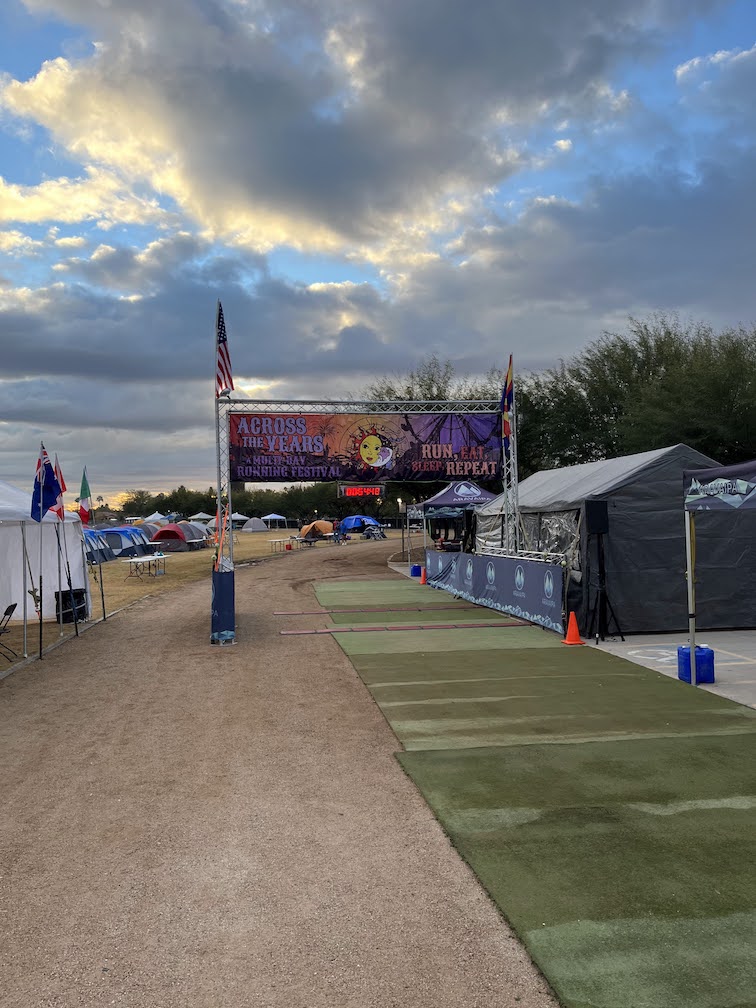
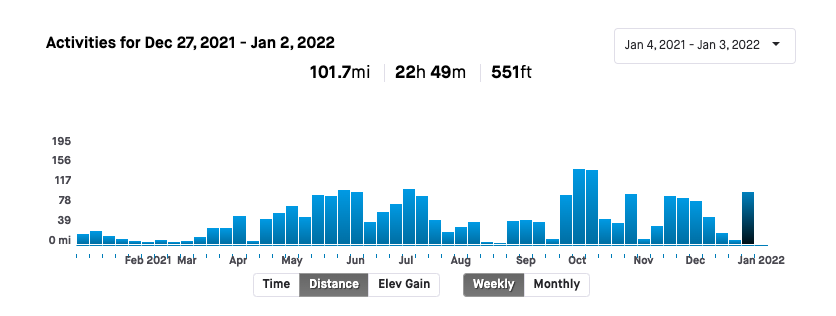
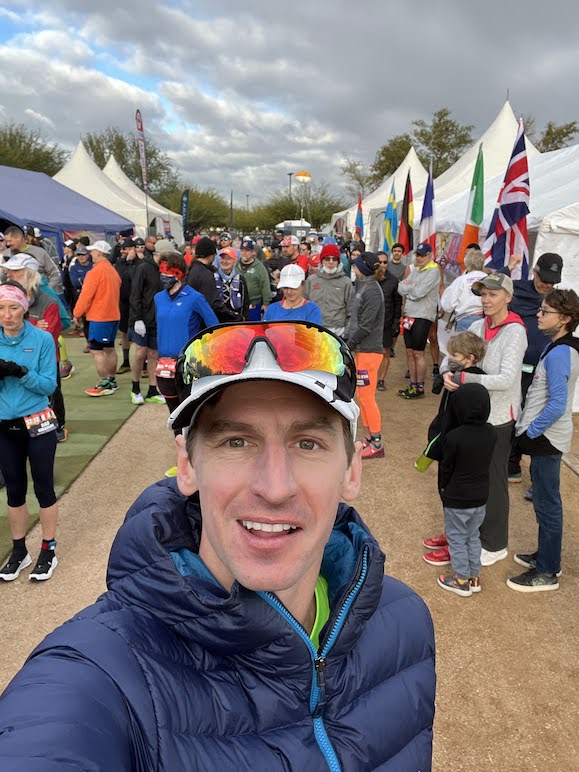
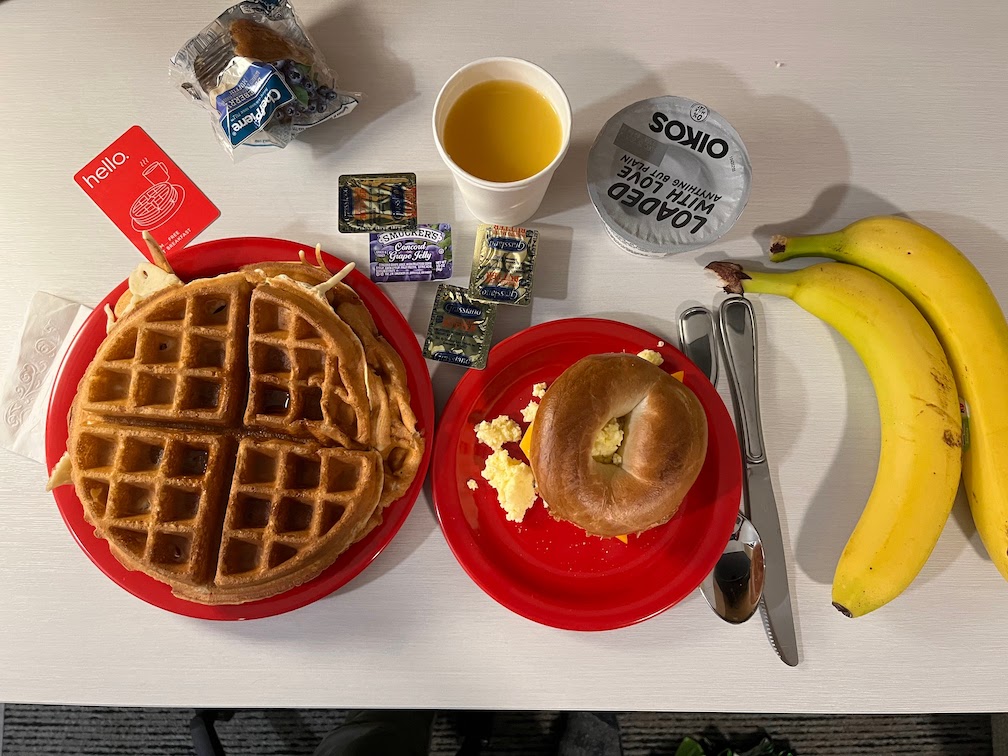
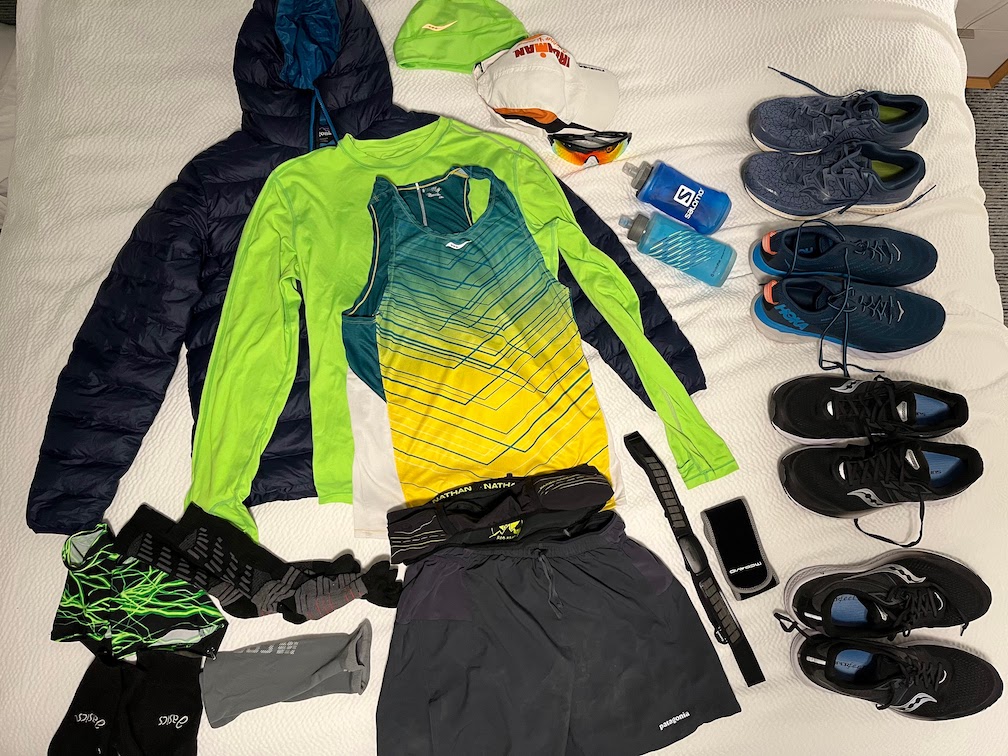
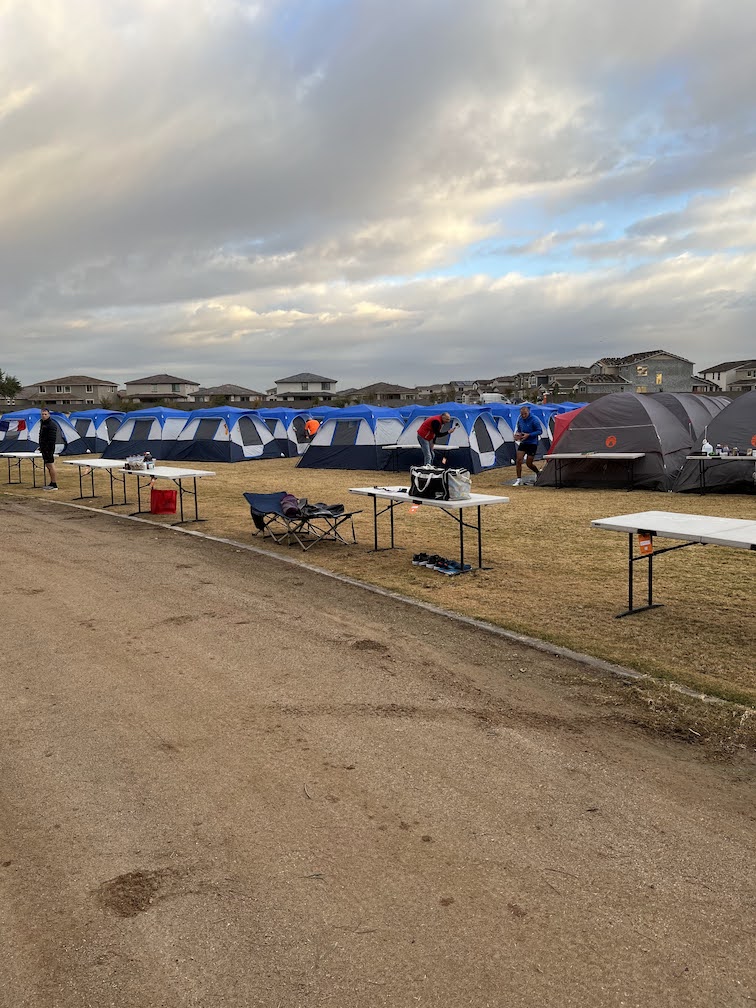
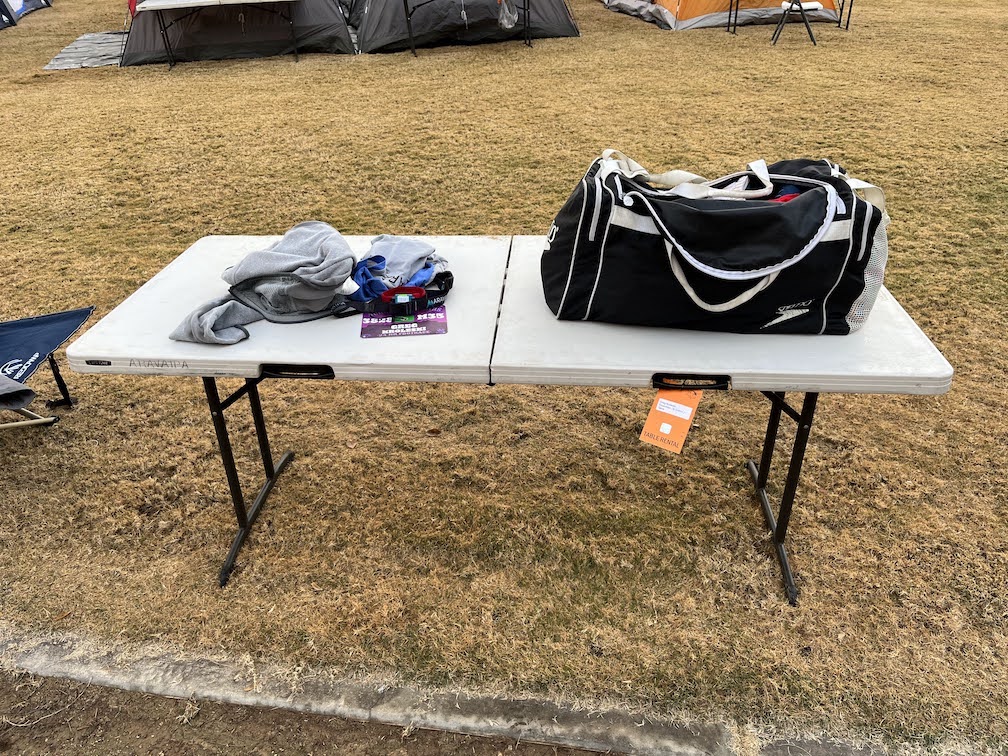
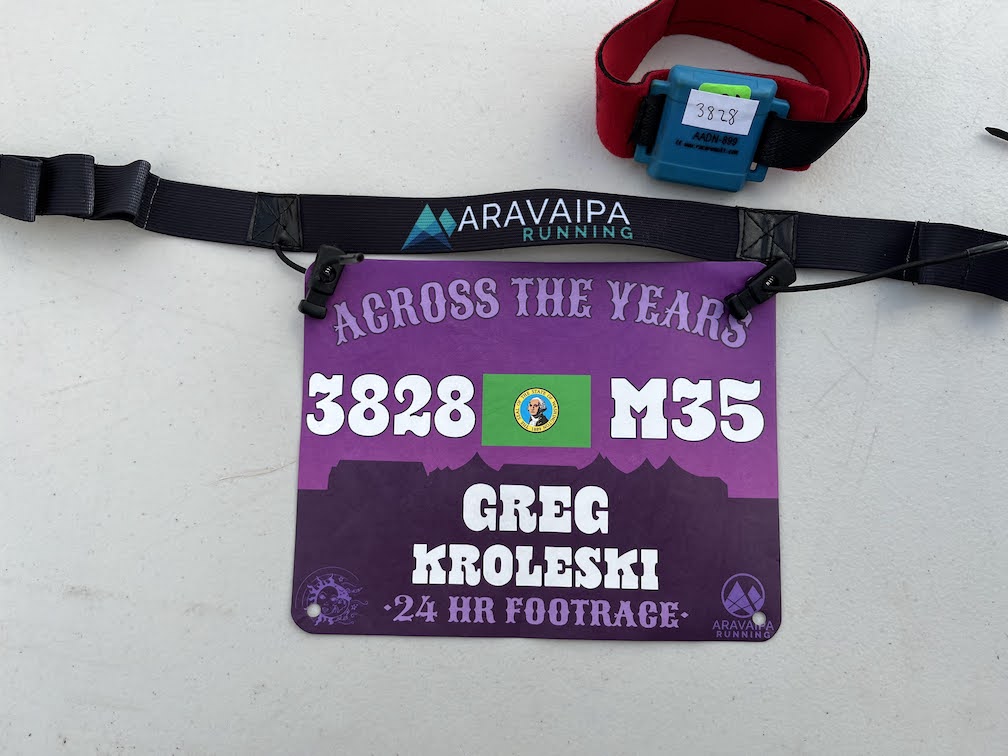
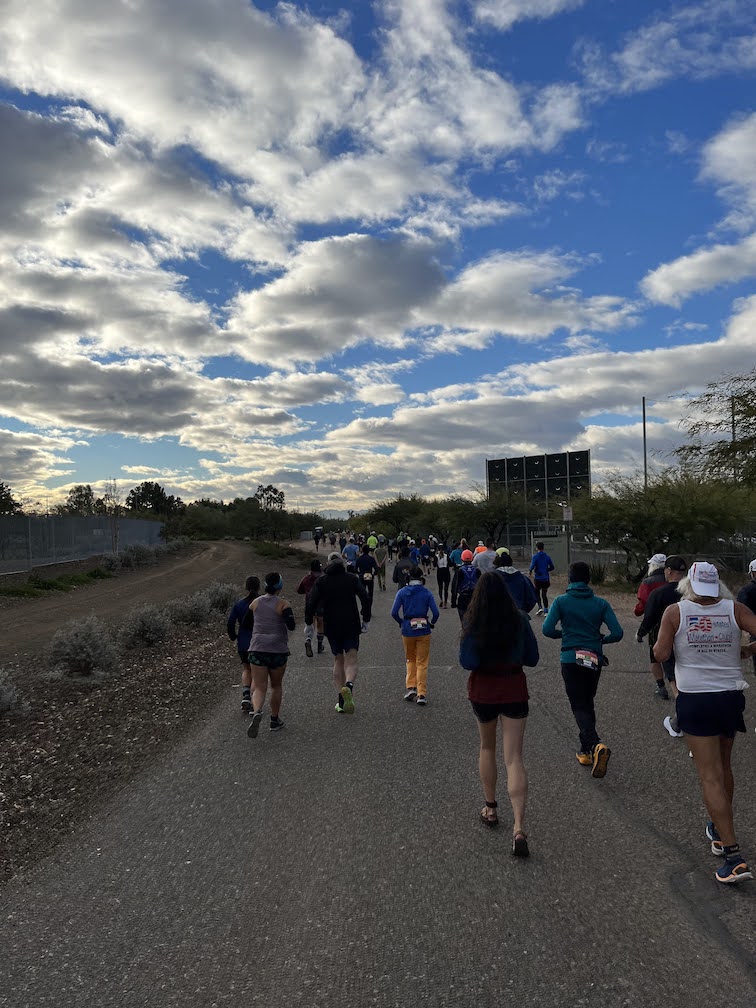
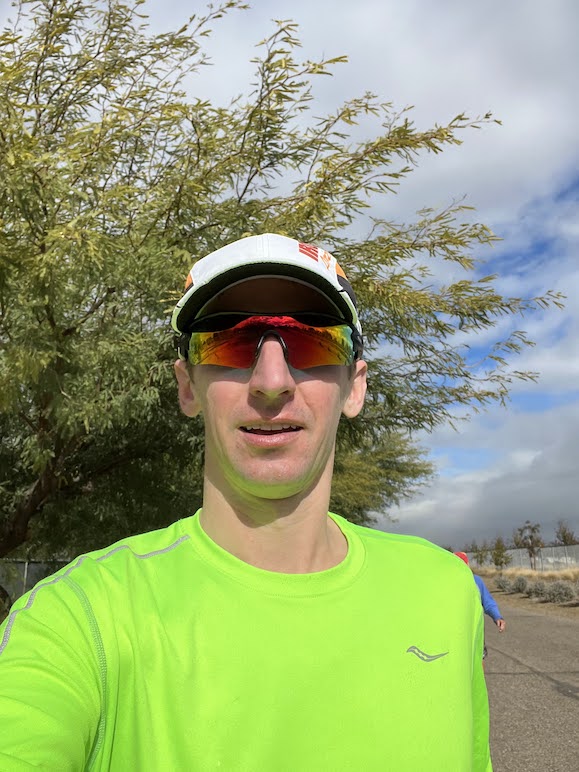
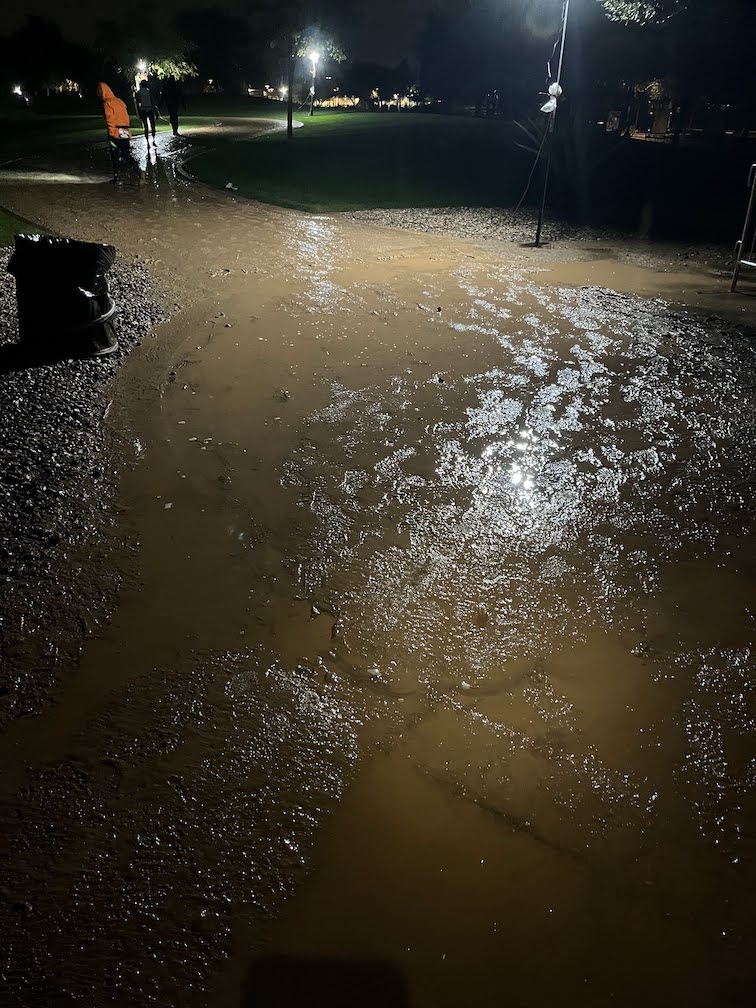
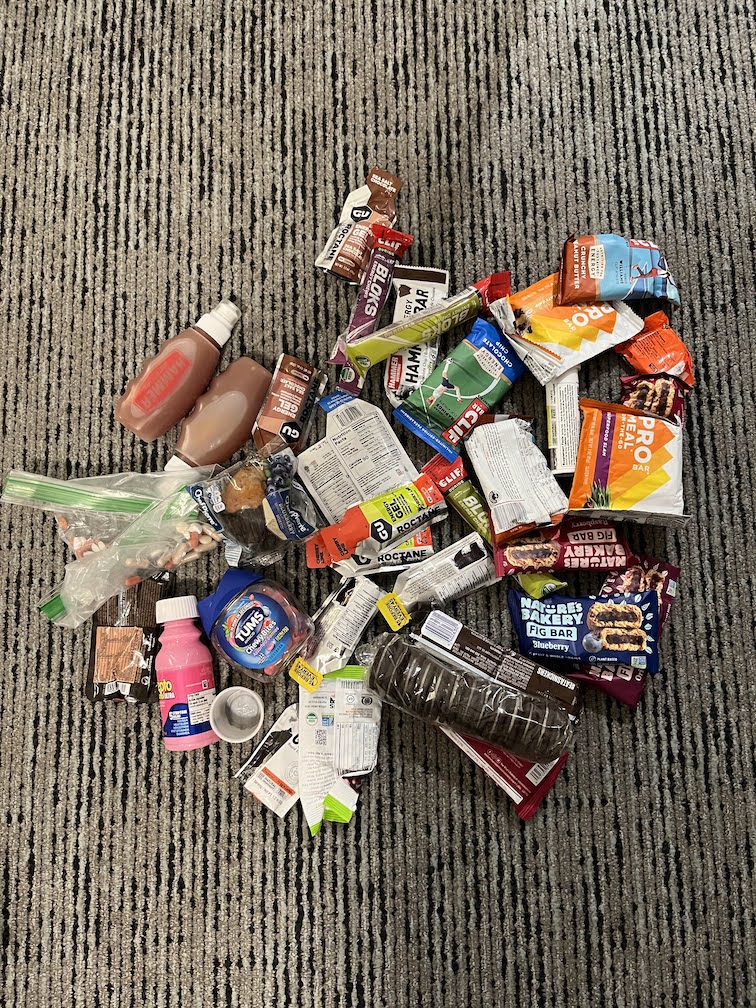
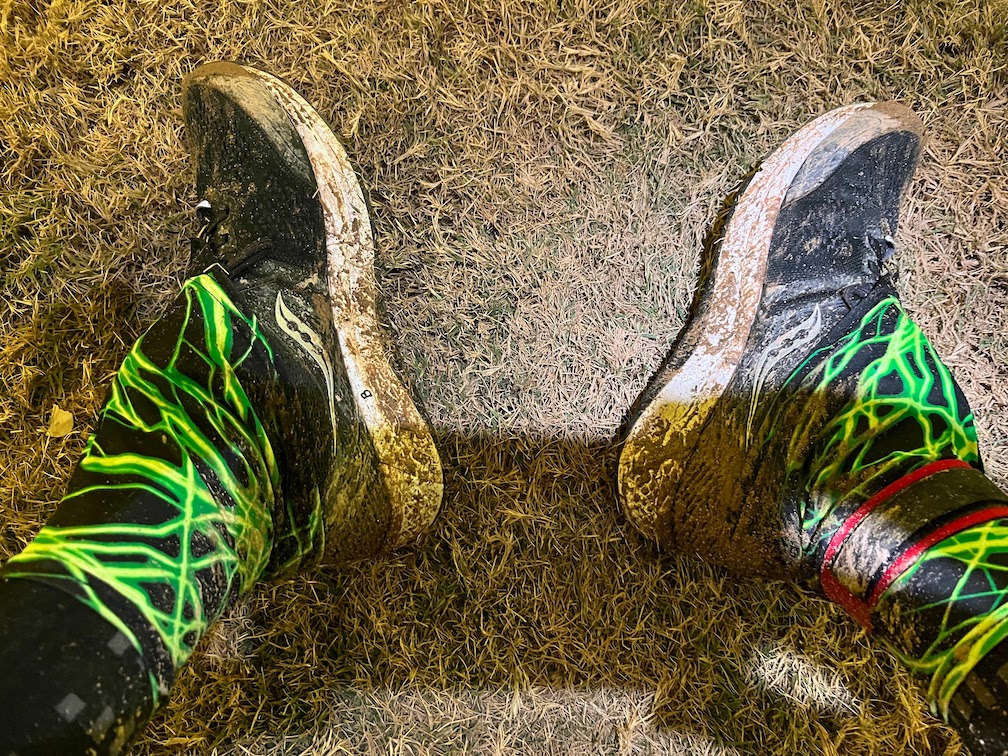
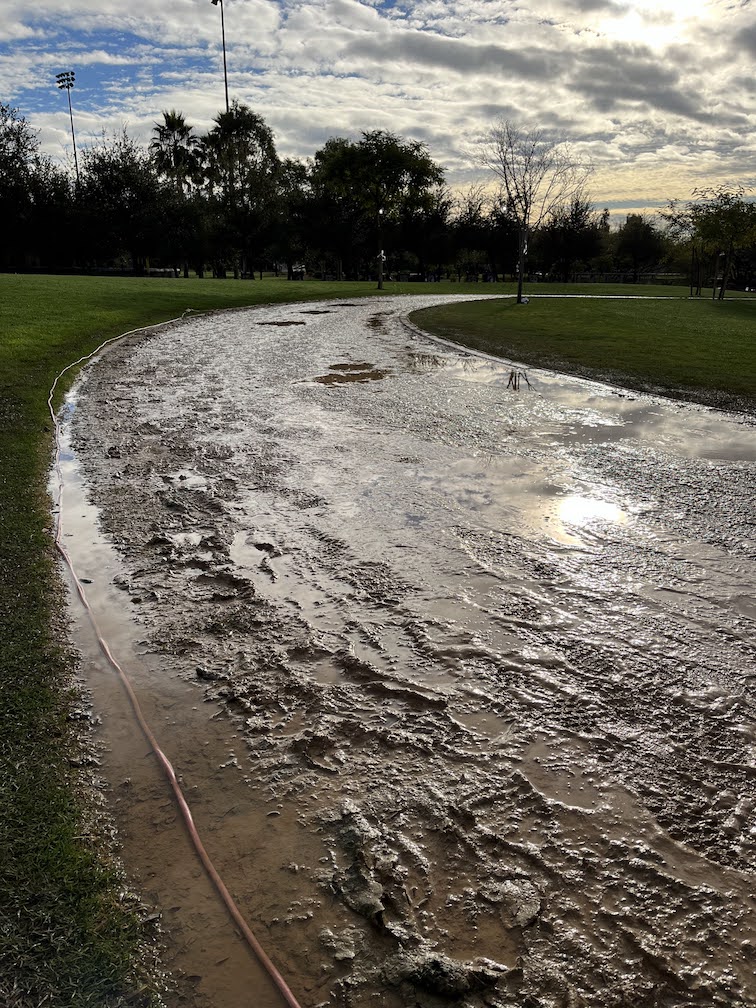
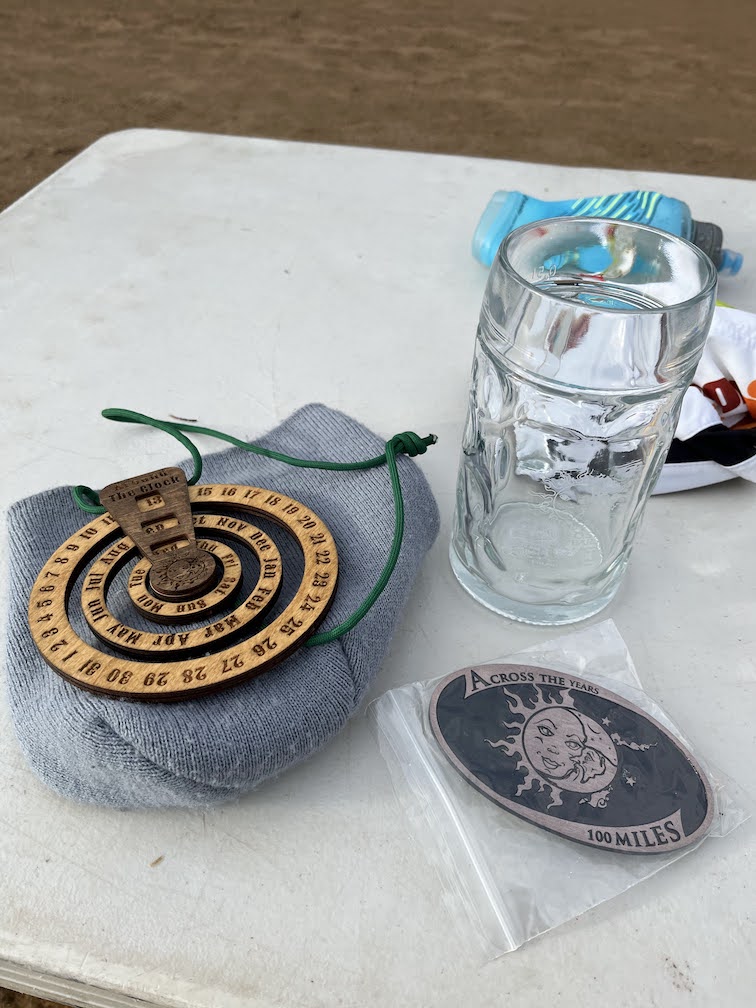
One thought on “Race Report: Across the Years 24 Hour Footrace 2021”